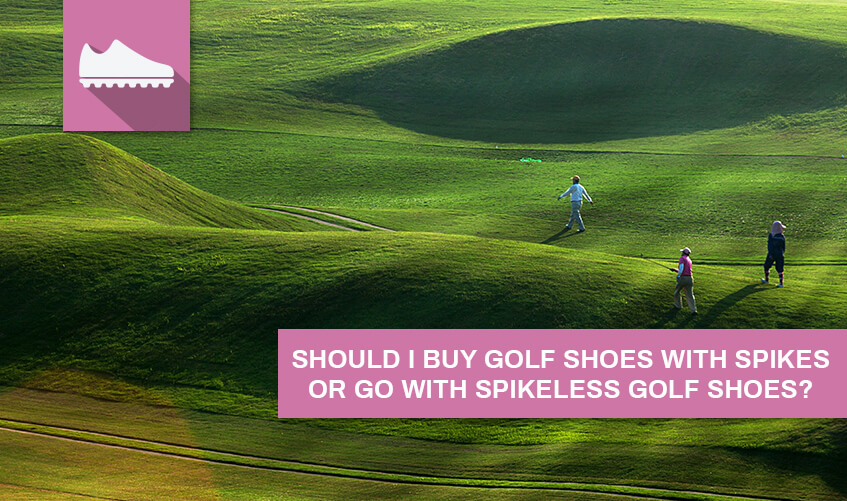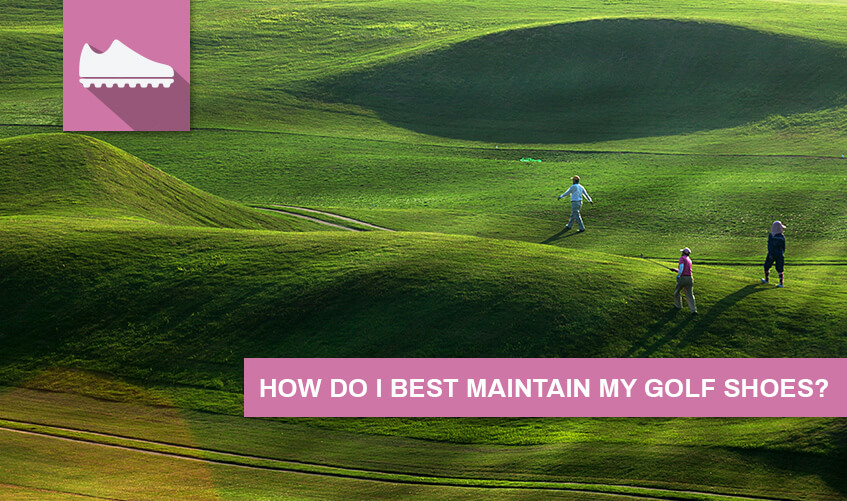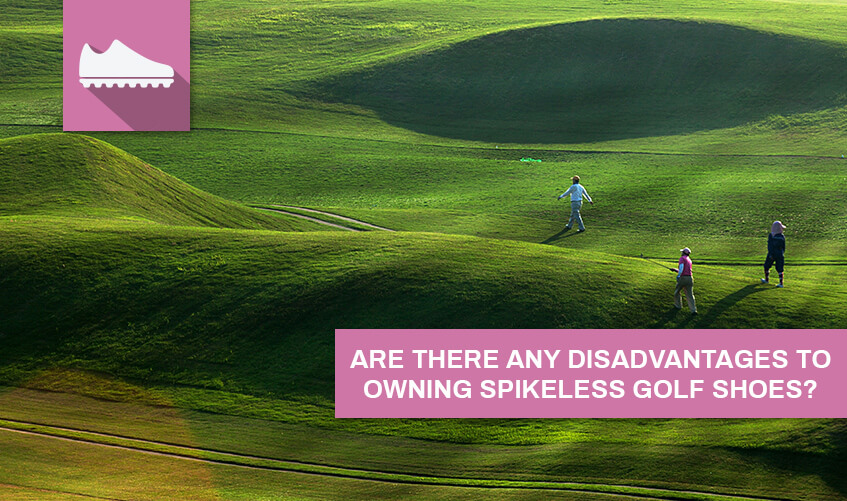Types of Golf Cleats and Spikes
There’s nothing quite like the sensation of slipping on the golf course – especially in the middle of your swing. Sure, your friends will get a kick out of watching your feet touch the sky as the rest of you comes crashing down on the wet fairway, but you’ll just end up bruised, wet and mortified. With a multitude of different types of golf spikes and cleats on the market today, why risk the humiliation?
Golf spikes and cleats do more for golfers than just save them from an embarrassing fall on the golf course; they also help to keep golfers grounded throughout the course of each swing.
There are two points of bodily contact during each swing in golf: The golfer’s hands on the club, and the golfer’s feet on the ground. And while having a good grip on the ground during one’s backswing and follow through is just as important as the grip on his or her clubs, many golfers have a tendency to overlook the many benefits that different golf shoe spike types have to offer.
Let’s dive deeper into the world of golf spikes and cleats, while focusing on some of the ways that adding the perfect set of golf spikes can add to your game.
Why Do Golf Shoes Have Spikes?
The reason that you should always be wearing a good set of golf spikes or golf cleats is rather simple: courses can make for slippery landscapes, especially when dampened by the morning dew. Golf spikes and cleats counter the potential hazards presented by the wet grass of the fairways and greens by keeping the golfer’s feet planted firmly on the ground.
Choosing the right golf shoe spikes type won’t just save you from the embarrassment of slipping up, either; they can also help solidify your stance to improve your swing and increase your driving distance off the tee.
It’s obvious that every serious golfer needs a good set of golf shoes and accompanying golf shoe spikes or cleats, but which types will provide the best results for your golf game?
History of Golf Shoes
The various types of golf spikes and cleats available in the 21st century are a far cry from their crude beginnings in the mid-1800’s.
For example, the earliest golf shoe spikes – developed in the mid-19th century – consisted of nothing more than small nails and sticks that were attached to the soles of golf shoes to provide players with traction while out on the course. While this footwear gave golfers much-needed grip, one can only imagine today how uncomfortable – and destructive – these makeshift shoes must have been.
Later advances in golf shoes gave golfers a screw-in spike option so that spikes could be changed in and out between the golf course and the clubhouse. While these were an improvement upon earlier golf shoes, this type of spike still did extensive damage to fairways and greens.
The golf spikes and cleats of today, however, have come a long way from their predecessors, allotting golfers the traction that they require while causing little harm to the beautiful landscapes that groundskeepers work so hard to maintain. Oh, and they’re quite comfortable to wear, too.
Different Types of Golf Shoe Spikes
There are three main types of golf shoe spikes on the market for modern day golfers, but some offer more advantages than others. Golf spikes can be made out of three materials: metal, synthetic rubber (also called soft spikes), and ceramic.
- Metal Spikes. Metal spikes were one of the first modern golf shoe spikes created, and were essentially just metal posts that were screwed onto the bottom of your golf shoes. Metal spikes are the most durable out of the three, but they require significant upkeep and are rough on the golf course– often tearing up the carefully manicured fairway. Since they are so damaging to golf courses, many places have banned them and manufactures have stopped making them. They are also the heaviest of the three, which can negatively affect your swing.
- Rubber Spikes. Crafted from flexible and durable polyurethane, these are perhaps some of the most popular golf spikes on the market today and are the least expensive. Since these are not made of metal, they are lighter weight, more comfortable, and don’t cause any real damage to golf courses. However, the rubber material causes the cleats to have less traction on wet courses than metal spikes, and a shorter life span.
- Ceramic Spikes. While these are the most expensive golf shoe spikes you can purchase, these contain the most advantages out of the three. Ceramic spikes are extremely long lasting, and don’t need to be replaced nearly as much as soft spikes. Many professional and advanced golfers favor these types of golf shoe spikes because they are resistant to scuffs, scratches, and cuts and very resilient. One of the few disadvantages besides the price is that they often come with steel protuberances which require constant maintenance to keep from corroding.
Which Golf Shoe Spikes And Cleats Are Right For You?
Choosing the right golf shoe spikes and cleats – just like everything else in golf – is about finding the perfect balance that fits your individual needs. Finding the right mix of traction, comfort, and durability is important when evaluating the many different brands and types available today.
Consider asking yourself these questions before making your next golf shoe spikes and cleats purchase:
- What’s more important to me, traction or comfort? Some golf spikes focus on more traction for better grip on the golf course, while others offer a low-profile design that blends traction control with the natural comfort and feel of a regular sneaker.
- Will I mind changing out my spikes often? There are many interchangeable spike systems on the market today, including large thread, small thread, Fast Twist and the Q-LOK System. Each system offers different advantages during regular play, as well as when changing out spikes. Many spikes also have better durability than their competitors, which means that you’ll be changing out your spikes less often. Of course, the longevity of your footwear also depends on how you care for them, so make sure to regularly wipe them down and responsibly store them in a golf shoe bag or carrier so they don’t get squished.
- Do I want traditional spikes at all? Some golfers would rather not deal with spikes at all, but does that mean that they’re strolling around the golf course in their tennis shoes? Of course not. In fact, there are several varieties of golf cleats available today that blend the comfort of your everyday casual shoes with the grip and traction of a professional golf cleat.
There are many different types of golf spikes and cleats that golfers can choose from before lacing up and hitting the links. Finding the perfect pair of golf shoes and accompanying spikes or cleats is all about personal taste and how natural your golf shoes feel throughout the course of your entire swing. Try several different types of golf spikes and cleats during your practice rounds, and soon you’ll be sure to find the ones that are the best suited for your game.



